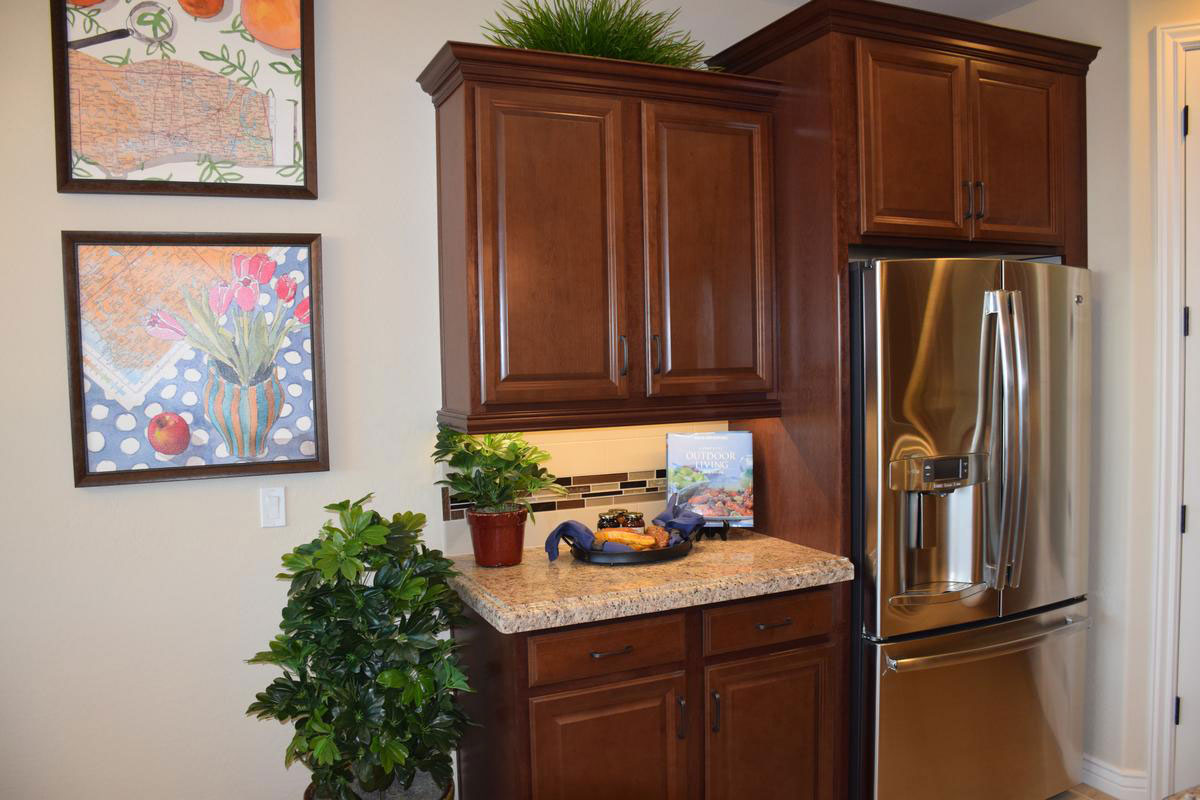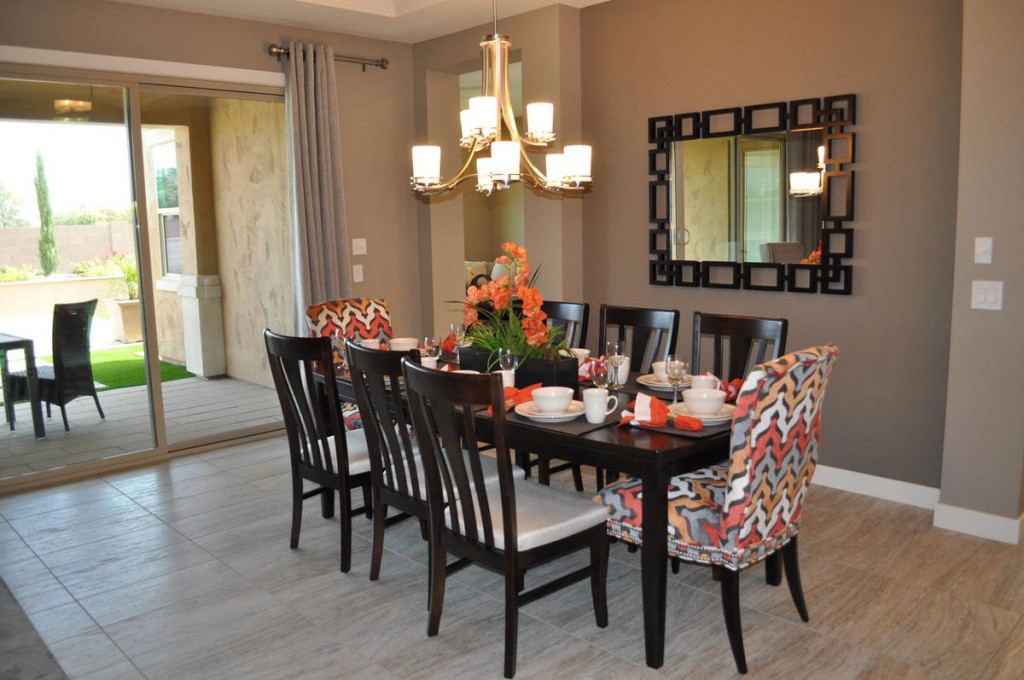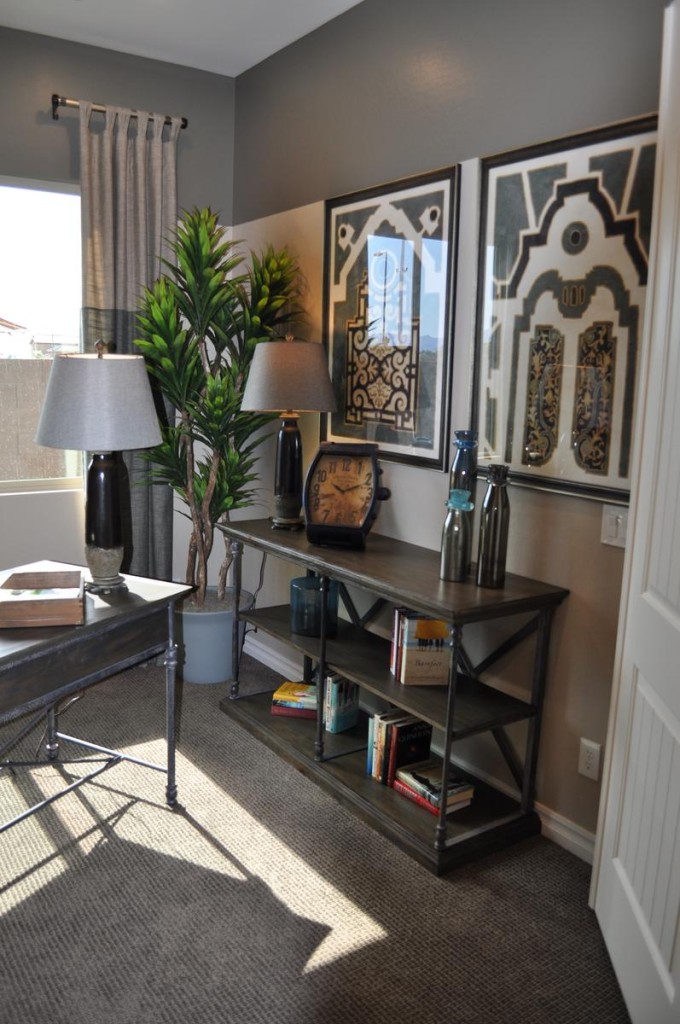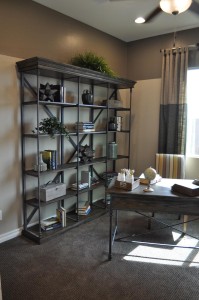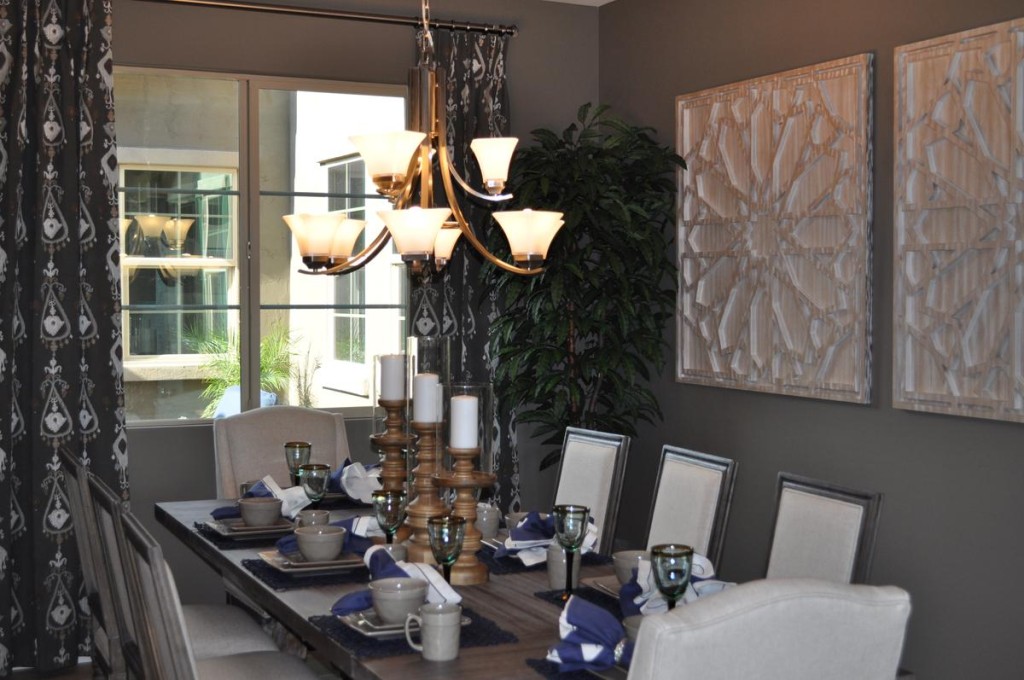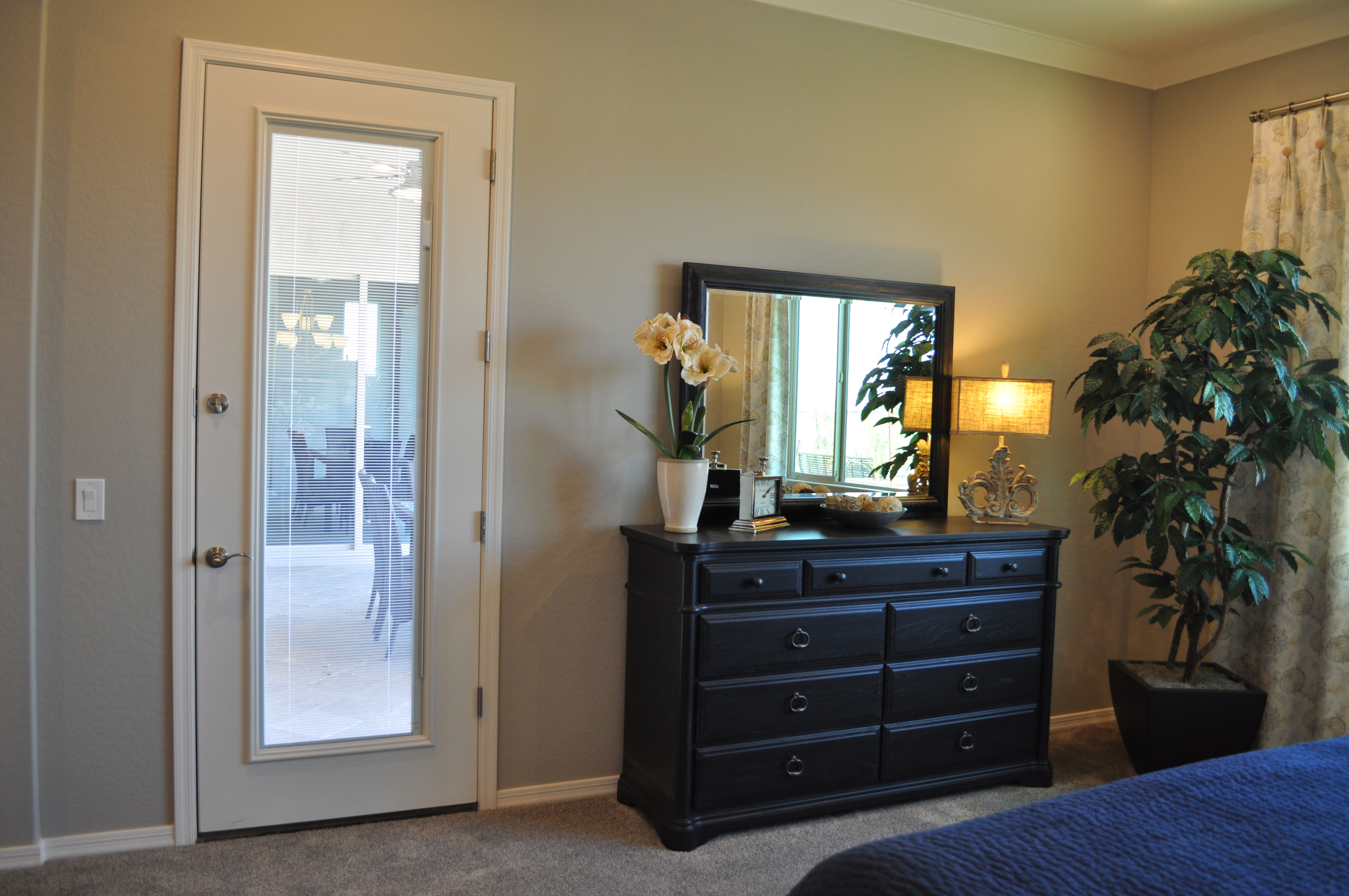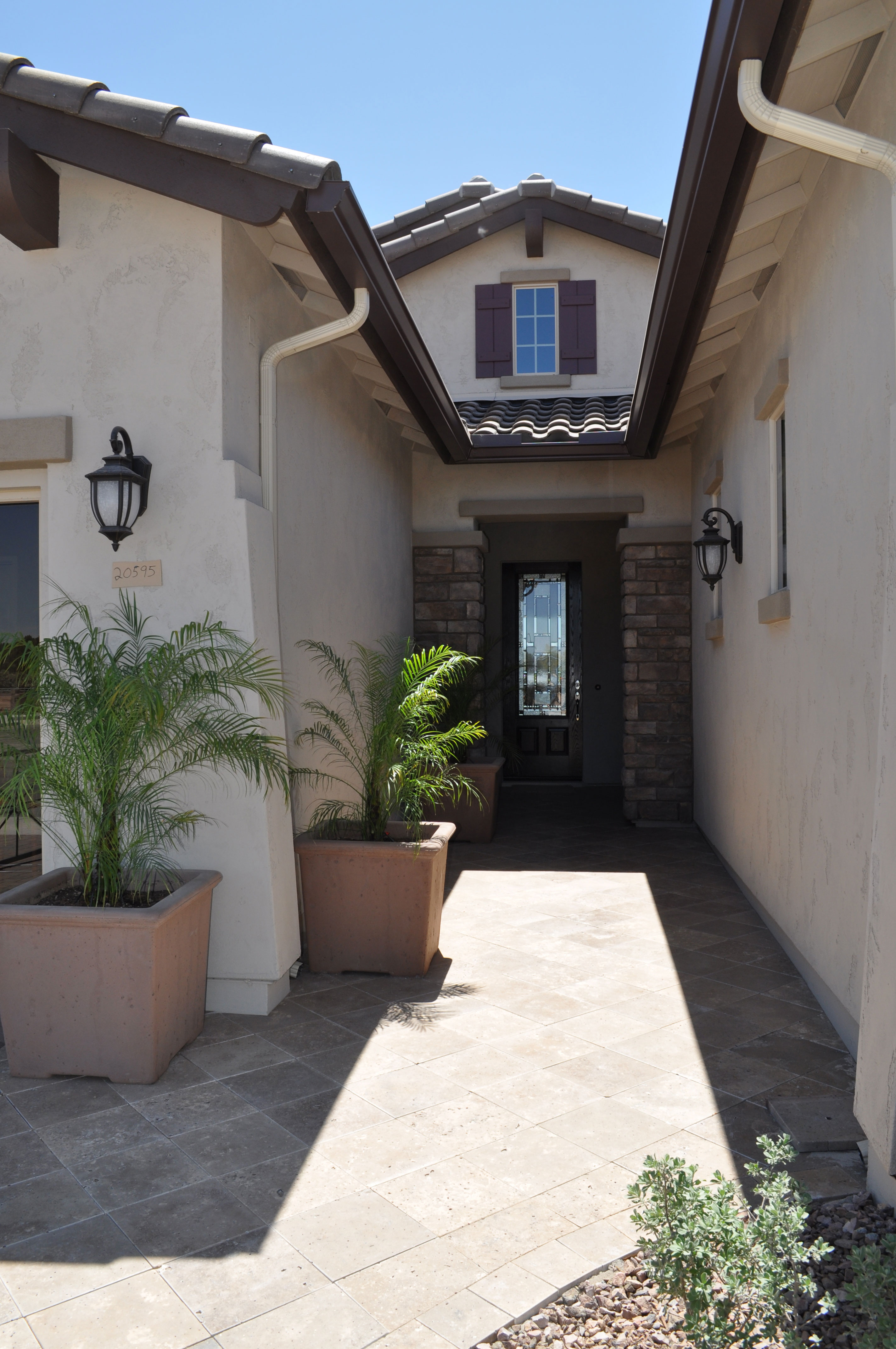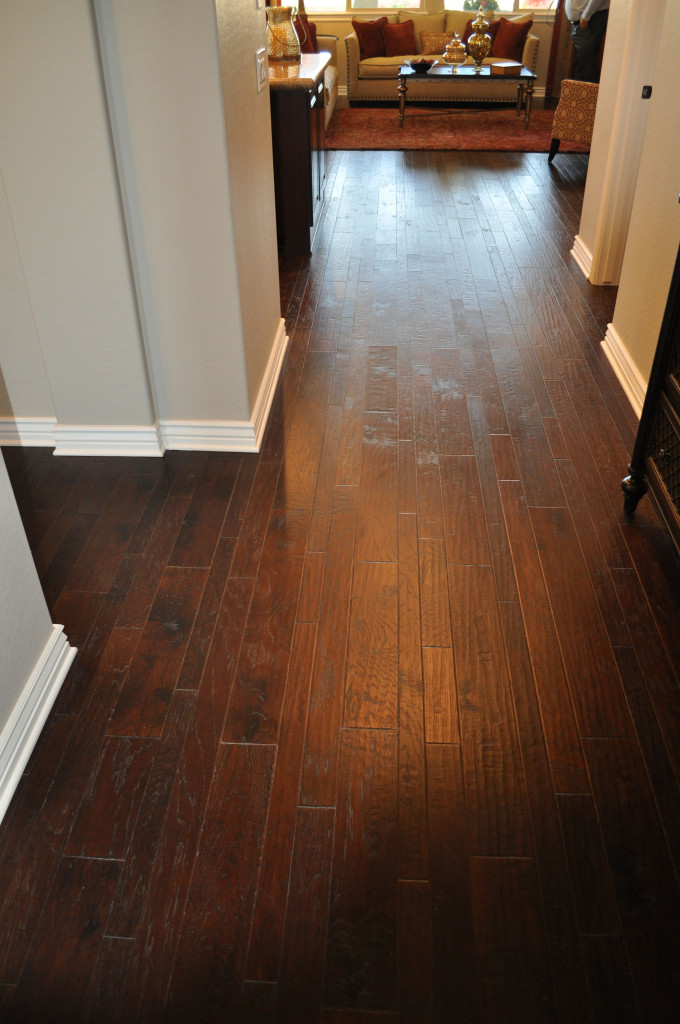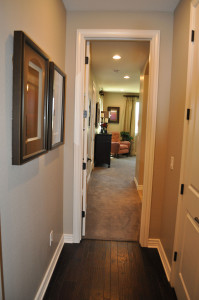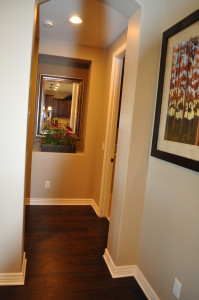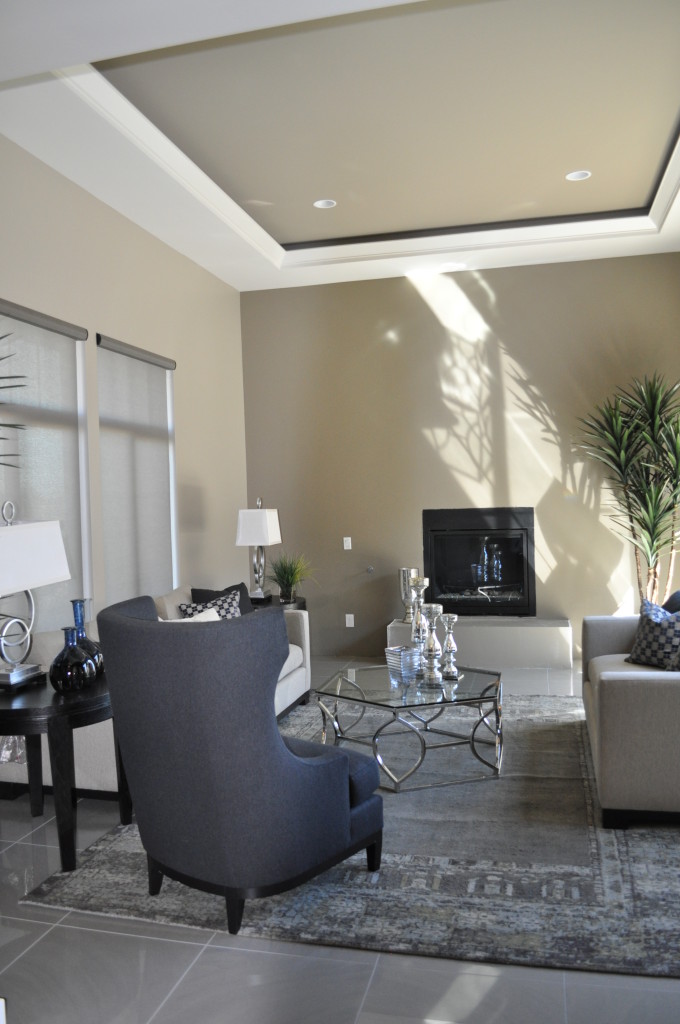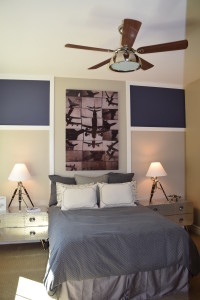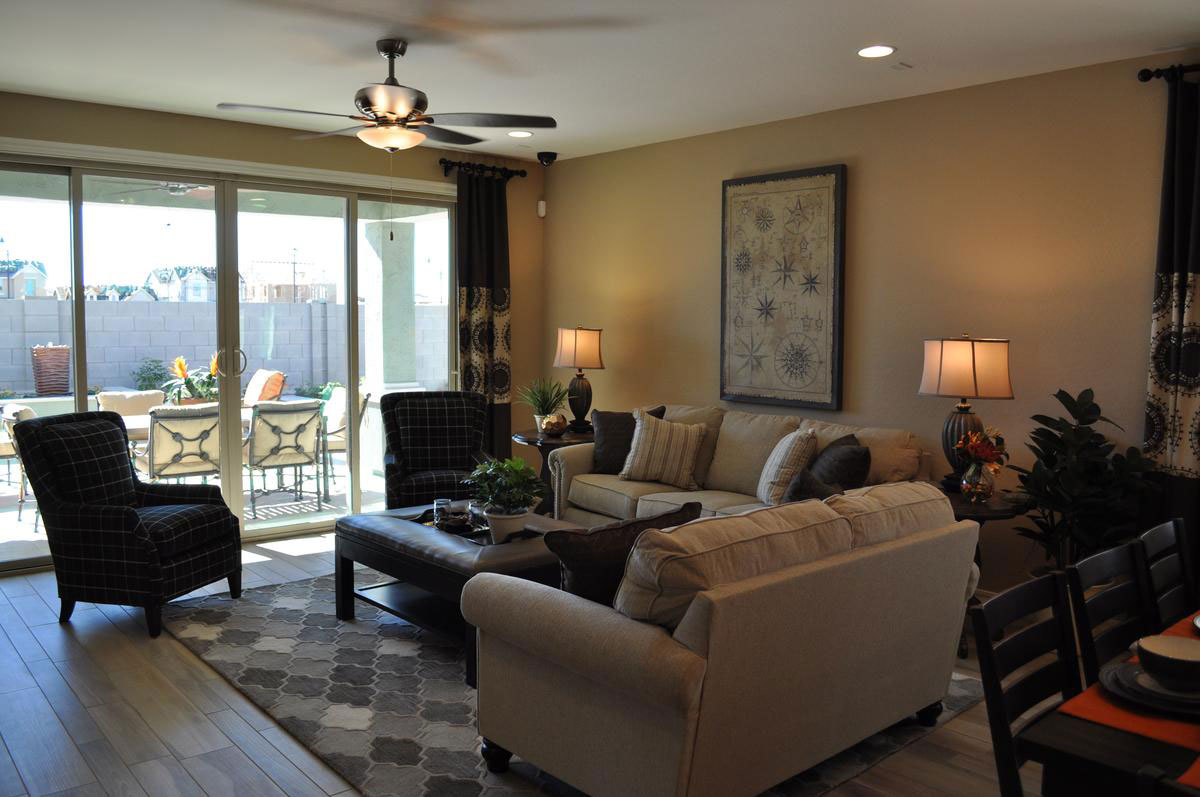 With a strong dark grey influence, it would be easy for this family room from the Capital model at Seaboard in Cooley Station to feel cold. But it doesn’t, and that’s because of the careful use of brown. From the light brown/almost beige of the sofa and loveseat to the dark brown leather on the coffee table/ottoman combo, brown pulls in a feeling of comfort and welcome. Let’s look at the design choices that warm up this space.
With a strong dark grey influence, it would be easy for this family room from the Capital model at Seaboard in Cooley Station to feel cold. But it doesn’t, and that’s because of the careful use of brown. From the light brown/almost beige of the sofa and loveseat to the dark brown leather on the coffee table/ottoman combo, brown pulls in a feeling of comfort and welcome. Let’s look at the design choices that warm up this space.
Gold walls: The rich gold-brown tone on the walls creates a cozy feeling. Using darker tones helps draw people to a room, making it feel like a special club. This tone is warmer than the flooring so that together they play on the grey and brown tones that make up the color palette of the space.
Plaid chair upholstery: Plaids have always said comfort, and this windowpane pattern in dark tones brings comfort to the foreground. With the ottoman and curtains, they are the darkest elements in the room, and help anchor it without making it feel dreary.
Area rug choice: The mix of greys has an almost tweedy feel, fitting well with the plaid and maintaining the traditional comfort approach. This is a room made for wearing slippers.
Plants: Houseplants in a room always make it feel fresh and homey. Just a few green plants make a difference.
When decorating your family room, think about the choices you can make in both color and style to create an environment that says comfort, to encourage family and friends to relax and stay a while.

